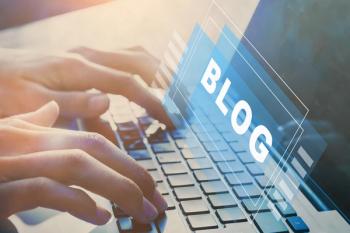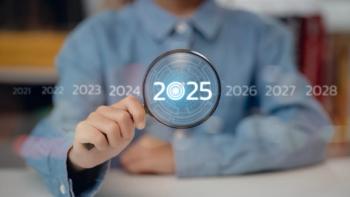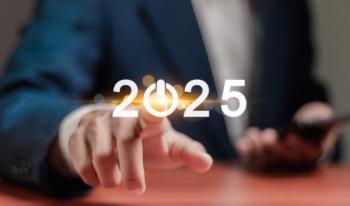
Using Spectroscopic Sensors in Creating a New Beverage Recognition System that Improves on Smartphone Apps
Key Takeaways
- Compact spectroscopic sensors with machine learning offer over 96% accuracy in beverage identification, surpassing smartphone-based food tracking apps.
- The technology's integration into everyday objects could benefit populations without smartphones, such as older adults and individuals with disabilities.
Researchers at the National Research Council (CNR) in Rome have developed a compact spectroscopic sensor and machine learning system that can accurately recognize beverages in smart cups or glasses.
A recent study published in the journal Sensors investigated the practical utility of spectroscopic sensors in identifying beverages accurately. Led by Luca Maiolo from the National Research Council (CNR) at the Institute for Microelectronics and Microsystems (IMM) in Rome, Italy, the study looks at how individuals can monitor their nutritional intake better. They demonstrate in their study that compact spectroscopic sensors, when combined with machine learning (ML) algorithms, can be a better alternative to smartphone-based food tracking applications (1).
Currently, there are several food tracking apps available for users to download via the app store on their mobile phone. Some of the highly recognized food tracking apps include MyNetDiary, Weight Watchers, MyFitnessPal, and Lose It! (2). However, it has been acknowledged that these apps are only good insofar as the user inputs the information correctly. These apps also occasionally struggle to differentiate between different foods that look visually similar (1,2). In addition, the requirement to upload images raises potential privacy concerns, as personal data could be misused or exposed.
Imaging-based technology, because of its drawbacks, is not always accurate, prompting the research team to explore a better method in their study. They proposed a solution that is a compact sensing platform capable of identifying beverages automatically without requiring user input or smartphone images (1). The system makes use of a commercial spectroscopy sensor, the AS7265x, which captures the spectral “fingerprint” of a beverage (1). This data is then processed by a K-Nearest Neighbors (KNN) machine learning model, which classifies the beverage by comparing its unique spectral properties to stored references (1).
The results indicated by the study show that their method achieved a reasonably good classification accuracy. They reported an accuracy of over 96% when distinguishing among a diverse range of commonly consumed beverages (1). This level of accuracy was reached despite using only four key wavelengths, significantly reducing the computational requirements of the system while maintaining reliability (1).
Because this method involves the use of compact sensors, there are several exciting possibilities where this research can go further. To start, this method has the potential to be integrated into everyday objects, such as smart glasses and cups, which would allow for real-time beverage recognition with minimal effort from users (1). As much as the world has become digital, there is still a segment of the population that does not have a smartphone. Therefore, this potential innovation can be beneficial for older adults or individuals with disabilities, as these two groups are less likely to have a smartphone.
The research team emphasized in their article that this innovation could represent an important step in the evolution of Internet of Things (IoT) technology applied to health and nutrition. The creation of intelligent tools that can autonomously analyze the composition of foods and drinks in real time could provide users with detailed nutritional insights, help support adherence to dietary plans, and contribute to healthier lifestyles overall (1).
Apart from providing information to consumers, this study reinforces the idea of pursuing the development of more cost-efficient and technological-savvy devices. By relying on a commercially available sensor and a relatively simple machine learning model, the system balances affordability with performance (1). This balance makes the technology particularly attractive for scaling and widespread adoption.
To conclude their study, the researchers detailed their plans for future studies. They mentioned that the next goal will be to expand the system’s capabilities. This may include refining the classification process for more challenging beverages, incorporating additional sensor types, and testing preprocessing methods to improve robustness (1). There is also potential to extend the platform beyond beverages to solid foods, broadening its usefulness as a comprehensive dietary monitoring tool (1).
With the ability to seamlessly integrate into objects of daily life, this beverage recognition platform could soon bring automated nutritional monitoring to kitchens, restaurants, and healthcare settings worldwide. By harnessing the power of compact optical sensors and intelligent algorithms, Maiolo and his colleagues at the CNR’s IMM in Rome demonstrated how new IoT-enabled health technologies can make dietary monitoring easier, more accurate, and accessible to all (1).
References
- Montaina, L.; Palmieri, E.; Lucarini, I.; et al. Toward a User-Accessible Spectroscopic Sensing Platform for Beverage Recognition Through K-Nearest Neighbors Algorithm. Sensors 2025, 25 (14), 4264. DOI:
10.3390/s25144264 - Sassos, S. 9 Best Food Tracking Apps, According to Dietitians. Good Housekeeping. Available at:
https://www.goodhousekeeping.com/health-products/g28245675/best-food-tracking-apps/ (accessed 2025-08-18).
Newsletter
Get essential updates on the latest spectroscopy technologies, regulatory standards, and best practices—subscribe today to Spectroscopy.




